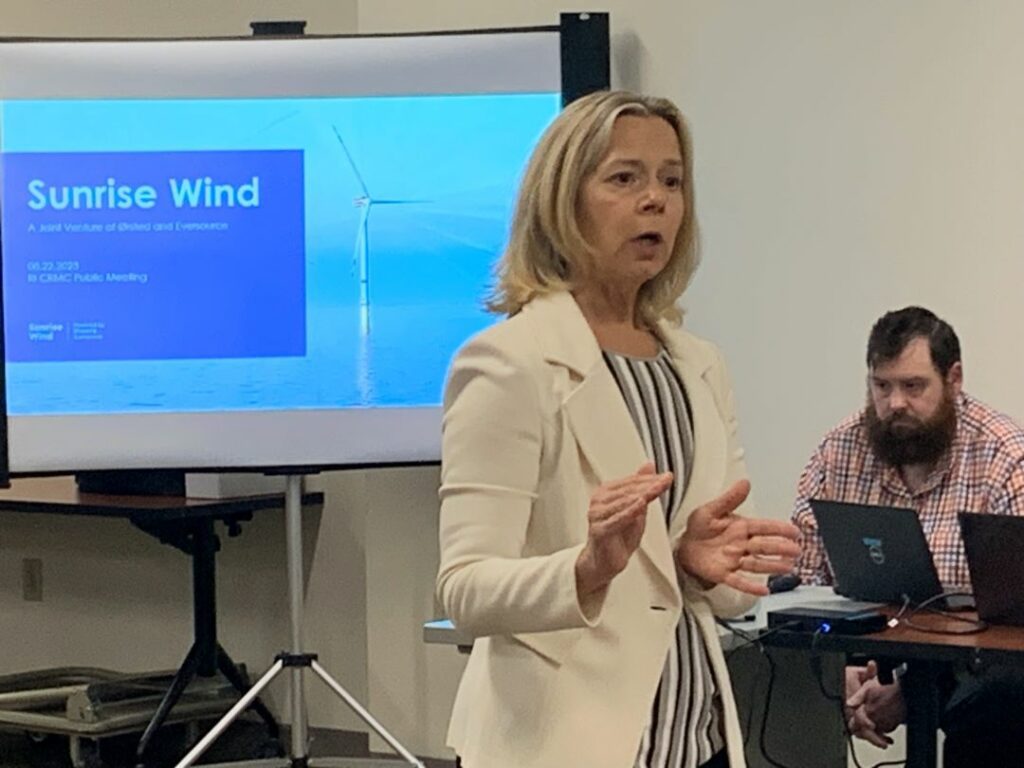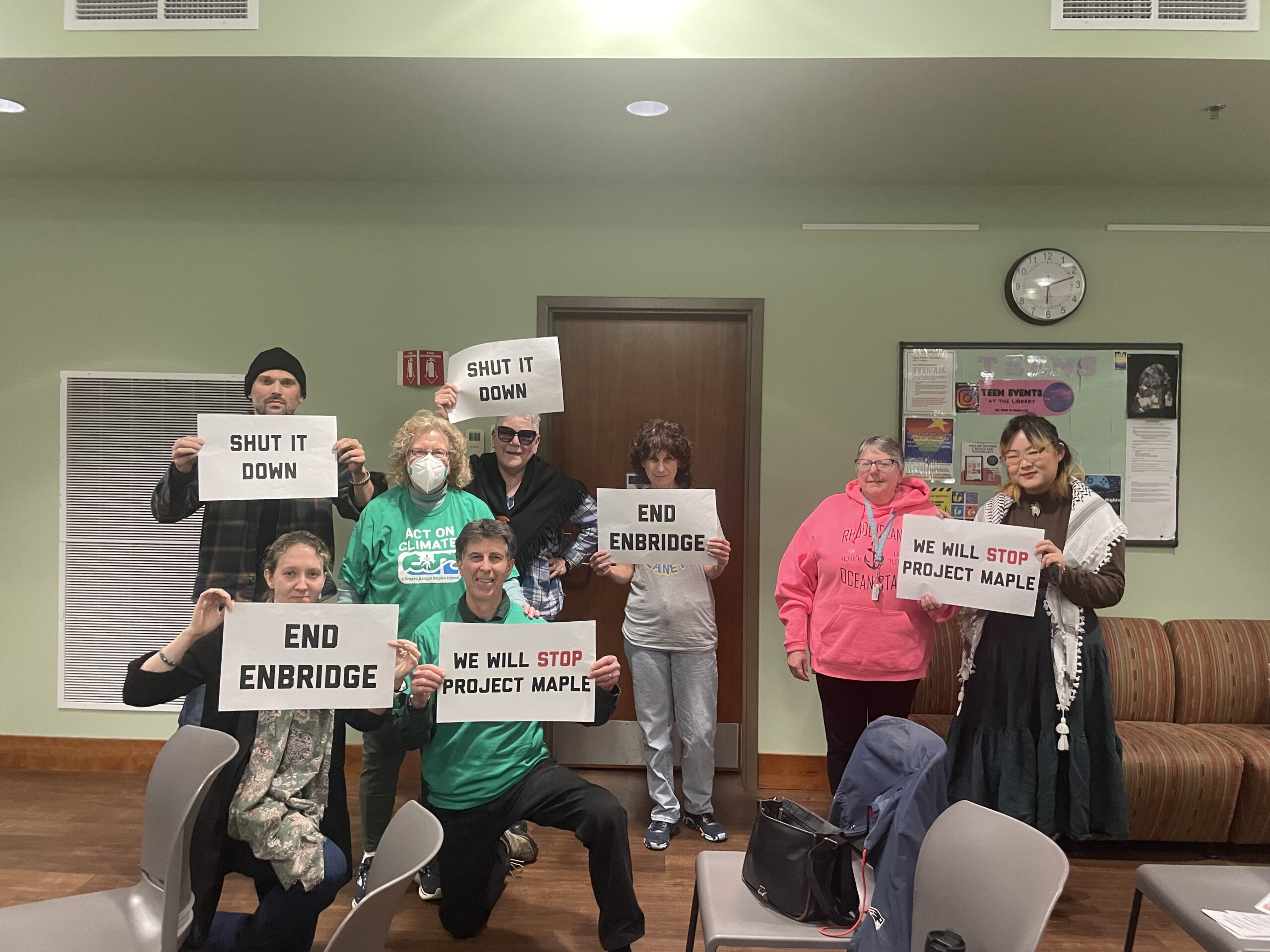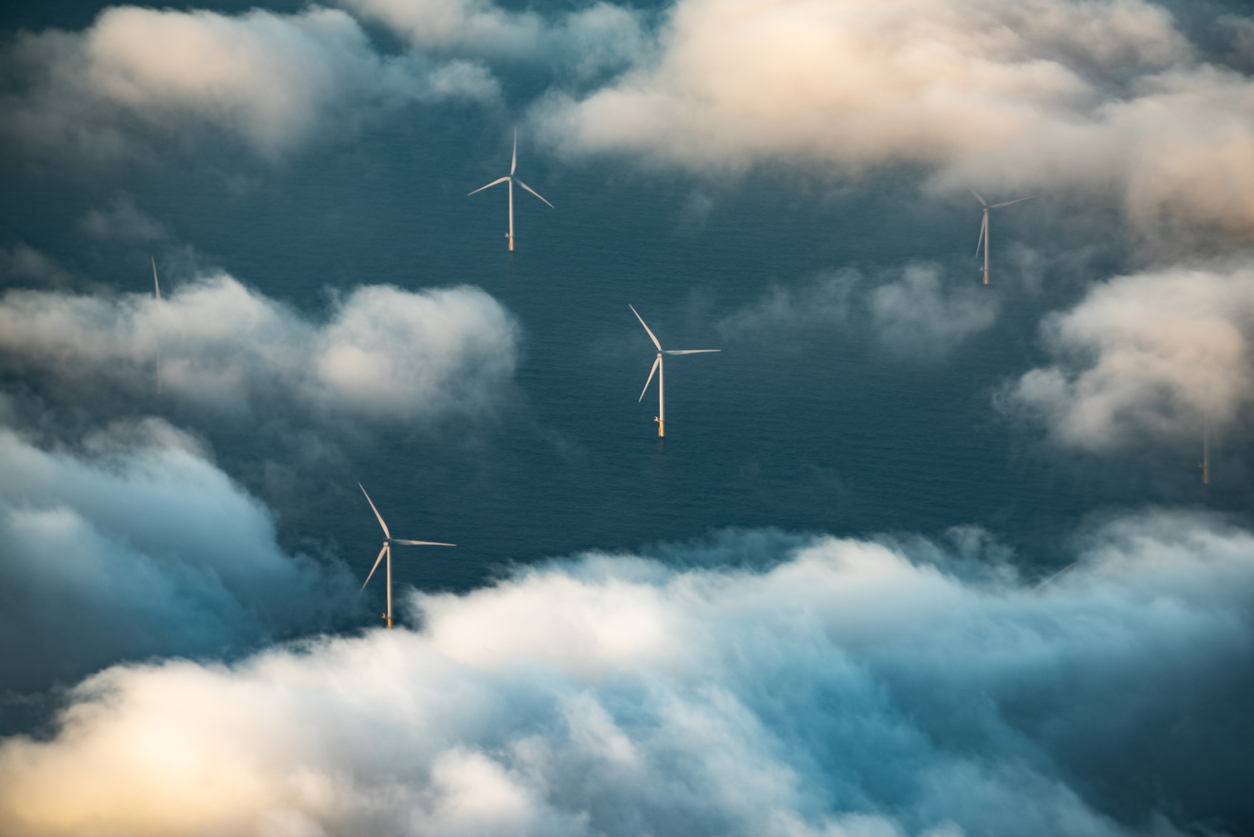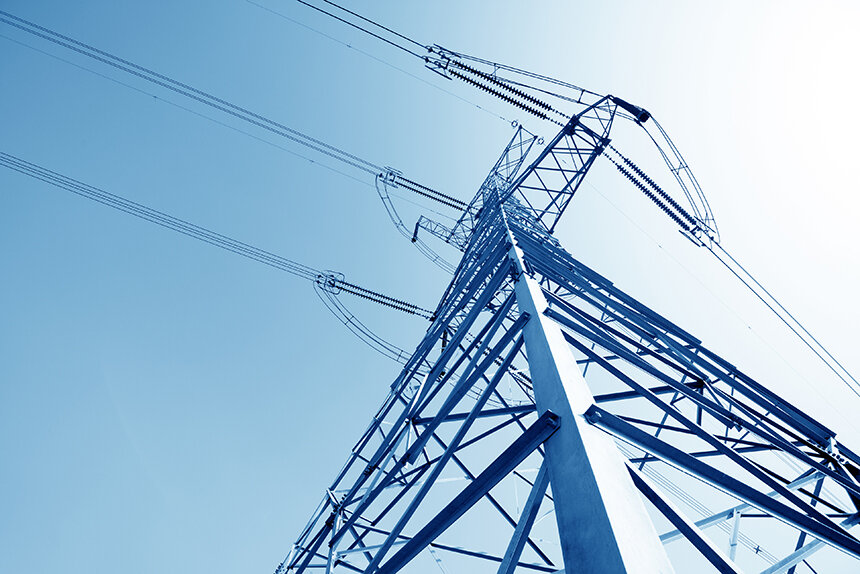Fishermen’s Protests Muted as R.I. Coastal Board Approves Sunrise Wind Project
Project's 84 turbines would be built 16 miles from Block Island in federal waters
August 28, 2023
After four and a half hours of expert presentations and audience pushback, the Coastal Resources Management Council unanimously approved the Sunrise Wind project that developers hope to build in 2025 on the Outer Continental Shelf.
The 84 turbines of Sunrise Wind would be built about 16 miles from Block Island in federal waters and would pipe electricity to Long Island, N.Y. But because of the wind facility’s location, Rhode Island has some limited approval powers under federal law.
A surprising thing about the Aug. 22 hearing were the scanty and muted objections voiced by Rhode Island fishermen, especially compared to the hours of boisterous arguments they aimed against Revolution Wind, another proposed offshore wind project, before the same board earlier this summer. (That project passed the CRMC and, this week, won a major federal approval.)
Fishermen at the recent Sunrise Wind hearing raised some of the same objections lobbed against Revolution Wind, including: loss of fishing income; dangers to fishermen working in and around the wind facility; problems with radar; the need for more onboard manpower for safety; and claims that CRMC is getting out ahead of yet-unpublished federal studies. They also claimed CRMC was flouting its own oversight regulations.
But opposition speakers were few, mainly from the Fishermen’s Advisory Board (FAB) and from Seafreeze Ltd., a North Kingstown fishing company.
Alisa Richardson, an environmental engineer, speaking on behalf of FAB, said questions are still unanswered and compensation for fishermen is inadequate. “It is almost like eminent domain without fair compensation,” Richardson said.
In a role reversal, some fishermen praised Ørsted, the developer of Sunrise Wind, and spoke in favor of fishermen working in concert with wind developers off the New England coast. They said the two industries had the potential to work cooperatively.
Gary Yerman, a commercial fisherman for 50 years who works for Sea Service North American out of New London, Conn., said he does some on-water work as a “scout” for offshore wind companies, and the partnership is positive.
“We will be present at the table, and we will work the waters with offshore wind,” Yerman said. “This is not a zero-sum game. It can be a win-win.”
Another speaker, Scott Yerman, said, “I believe fishermen and offshore wind can co-exist. If there are fish in the water, we will find a way to fish for them. There is no doubt in my mind.”
Also during the public comment session, an environmentalist from the National Wildlife Federation and a Brown University professor who specializes in fossil fuel industry propaganda against offshore wind reminded people about the purpose of the endeavor: to decarbonize the environment and fight global warming.
Timmons Roberts, a professor at Brown University, said, “Why are we here? Because of the crisis of climate change. We saw it this summer; we have broken the planet. Offshore wind can help shut down the fossil fuel plants that are cooking the planet.”

The proposed Sunrise Wind lease area covers about 110,000 acres and is about 19 miles south of Martha’s Vineyard, 16.7 miles from Block Island, and 30.5 miles east of Montauk, N.Y. The final buildout will include up to 84 wind turbines and one power converter station. The export cable — taking power from the lease area to land — will make landfall in Brookhaven, on Long Island, and will not enter Rhode Island state waters. The project will supply 880 megawatts (MW) to 924 MW to New York under an agreement with that state’s Energy Research and Development Authority.
It is a joint project of Ørsted and Eversource Energy, which also are developing Revolution Wind and South Fork Wind.
The Sunrise Wind lease area is south of Cox Ledge, a rich fish habitat and spawning area where some of the Revolution Wind turbines will be placed. Fishermen argued loudly and emotionally about construction on Cox Ledge during the permitting for Revolution Wind.
Strictly speaking, the CRMC vote stated that the Sunrise Wind project, with six added conditions, meets the requirements of Rhode Island’s Ocean Special Area Management Plan. Part of the conversation was about conditions CRMC and Ørsted agreed upon to reduce possible danger and harms to fishermen and the environment.
They are:
The original proposal for up to 122 potential turbine foundations will be cut back to 87 possible foundation locations and a maximum of 84 turbines.
The project will include no more than one offshore converter.
Where practicable, turbine foundations, the offshore converter station, and the associated inter-array and export cables will be sited outside of Cox Ledge and will be micro-sited to minimize the reasonably foreseeable effects to Rhode Island coastal resources and uses … unless such siting outside of Cox Ledge precludes Sunrise Wind from meeting its power purchase agreement obligations.
At all crossings of out-of-service cables, Sunrise Wind will use a de-trenching grapnel to recover a section of the cable to the ship’s deck. A section will be cut out, and the remaining cable ends lowered back to the seabed on either side of the Sunrise Wind cable route.
Sunrise Wind will conduct the fisheries research and monitoring plan and receive final approval from the Bureau of Ocean Energy Management
Sunrise Wind will provide to CRMC quarterly reports on the converter station with information required to be reported to the Environmental Protection Agency regarding station performance and impacts.
Another large part of the discussion was the estimated loss of income to fishermen caused by the construction and operation of the wind facility, and how much money the developer would pay into a trust fund for fishermen to offset that loss.
A report by CRMC staff gives different estimates from different parties for the economic exposure value for Rhode Island fisheries attributable to Sunrise Wind.
The Woods Hole Oceanographic Institute, which studied the compensation question, said the impact of the project on the Rhode Island fishing industry was equivalent to $9.3 million.
Ørsted formally offered fishermen a compensation package of $17.6 million.
FAB said a fair amount of compensation would be $177.3 million.
Ørsted makes its case
The public hearing opened with experts from Ørsted presenting a series of slides packed with information testifying to the safety of its wind turbine technology. They said the intake and release of ocean water for cooling the turbines would maintain safe temperatures and would not threaten sea life; that electromagnetic impulses from cables on the ocean floor were minimal and safe; that cables would be buried to a safe depth and covered, where needed, with slant-edged concrete mats, to avoid snagging on fishing gear that drags the bottom; and that the few boulders on the seafloor would be moved carefully and charted for mariners.
One opponent of the project, Meghan Lapp, an employee of Seafreeze Ltd., objected to the language of one of the conditions between CRMC and Ørsted. It states: “Where practicable, turbine foundations … will be sited outside of Cox Ledge …. unless such siting outside of Cox Ledge precludes Sunrise Wind from meeting its power purchase agreement obligations.”
Lapp wrote to the board, “The Ocean SAMP is Rhode Island state regulation and is not contingent on the utility requirements of another state. … RI CRMC’s legal responsibilities involve compliance with state regulation … not ensuring the financial viability of offshore wind power purchase agreements.”
Lapp pursued a line of discussion about power cables that Ørsted plans to bury 4-6 feet below the ocean floor, in some places covered by concrete mattresses where they intersect with other cables.
Ørsted has said the cables will be buried effectively and will be surveyed periodically over a period of years after construction. Lapp claimed the cables can become unburied and can snag fishing gear that is dragged, even to the point of capsizing a fishing boat.
Kyle Antonelis, a fisheries analyst with Natural Resources Consultants in Seattle, speaking for FAB, named a few countries that require fishing boats to maintain a quarter-mile setback from undersea cables. He said if that setback were applied to Sunrise, it would place 41% of the entire lease area off-limits to boats. In answer to a board member, Antonelis said he knows of no such regulation in the United States.
(Later, during a response, Robin Main, the lead attorney for Ørsted, said Ørsted requires no such boating setbacks from undersea cables.)
Much has been said about how turbines can render radar ineffective, creating a threat to mariners and fishers working in the wind farm. Antonelis said, “Mariners will have to adjust their watchkeeping requirements; additional watchkeepers will have to be hired.”
Lapp later added, “If you have an extra person at the helm at night when radar is not working, that person had better be trained,” which is an extra cost.
Ørsted, FAB, and CRMC have agreed to a Navigational Safety and Training Fund, but there is space between the developer’s and the fishermen’s expectations. The staff report says Ørsted “proposes to make funds available on a voucher basis for equipment updates and training as agreed under the [South Fork Wind and Revolution Wind] projects.” However, FAB wants funding “for commercial fishermen to add one-half of a full-time equivalent qualified vessel operator for 146 boats … to navigate in, through and around” the wind farm.
Building for the future
Some speakers were upbeat about the project. They included fishermen, developers, environmentalists, and members of the construction unions, who are eager to build a future of well-paid “green” jobs through the wind industry.
Fisherman Tyler Morrell said, “Fishing is always changing and there are always obstacles to overcome.” He said he looks at offshore wind as a “supplemental income source” that could make it more financially feasible for a younger commercial fisherman to afford to buy a boat, which is harder now than in earlier generations of fishermen.
Andrew Ahern of the National Wildlife Foundation called offshore wind “an opportunity to hasten the decarbonization process and clean up our air.”
Roberts, the Brown University professor, said, “There has been a campaign to undermine people’s confidence in science and solutions to climate change. It is funded by the oil industry. … These are unsubstantiated claims dealing in fear.”
Roberts noted that “offshore wind isn’t perfect, but we cannot let the perfect be the enemy of the good. Offshore wind’s impacts are a tiny fraction compared to oil, gas, fracking.”
Several construction union representatives lauded the wind project. One speaker said 47 categories of construction work can be applied to offshore wind construction, adding, “our members are eager to see the project move forward so we can help build a just transition” to a fossil-free economy.
The CRMC staff report said economic modeling indicates Sunrise Wind “will account for $1,750,000,000 in value added to the United States economy during the presumed 27-month construction phase and contribute approximately $70,000,000 annually during the operations phase.
“Rhode Island-specific direct economic benefits from Sunrise Wind are expected to be approximately $125,000,000 during the construction and operations phases. In addition, approximately 40 full-time construction jobs will be created in the near term.”




YOU WILL NEVER BE FOSSIL FUEL FREE
THE WIND TURBINE USES HOW MUCH FOSSIL FUEL JUST TO BE MANUFACTURED – HOW MUCH FOSSIL FUEL WILL BE USED FOR THE CONSTUCTION OF THE TURBINE ARRAY
THOSE FACTS ARE ALWAYS OMITTED
WHERE ARE THE EXSTENSIVE SURVEYS ON THE MARINE ENVIRONMENTAL IMPACT THAT THIS PROJECT WILL CAUSE
WHAT HAPPENS TO THE USED TUBINE BLADES WHEN THEY NEED REPLACEMENT IN 10 – 15 YEARS – WHERE WILL THEY BE BURIED
CLIMATE CHANGE IS NOT MAN MADE – IT IS JUST AN ADGENDA – THE CANADIAN FIRES ARE WORSE TO THE CLIMATE THEN FOSSIL FUELS
WHAT WILL HAPPEN IF THIS PROJECT DOES RUIN THE FISHING IN THE AREA… MORE THAN FISHERMAN WILL SUFFER – EVERYONE INVOLVE DOWN THE CHAIN WILL BE AFFECTED – FISHERMEN / DISTRIBUTION / RESTAURANTS / CONSUMERS
WHAT THEN ?
Is there training programs for the Offshore Wind Turbines industries? If not who sets up these programs? Where are these listings and who set the standards?
Where is the concern and info re impact on marine life during installation and operation? Have they decided the we who have caused this mess are the only ones worth saving?
Shame on this report. Where is the mere mention of funds accrued for post-hurricane repair or decommissioning? THERE ARE NONE. So who will be paying for this cleanup? Surely it will not be the LLC set up to construct this. They will be long gone and our seas will have been trashed.
My question: what is the projected lifespan of these wind turbines?
Is it really only 10-15 years?
Not listening to the local fishermen is bad enough. But one would think that with over 65 whale deaths where this offshore wind industrialization is happening that there would be a pause and have independent, non government and non wind company funded/sponsored marine organizations and environmentalists do some serious research. They claim it’s not the wind construction causing this. Then prove it, because no one has yet. As a matter of fact, there is more proof that they are. I want NOAA to prove these boat strikes didn’t happen postmortem. Was the whale deaf? They don’t even check that.
Those wind farms are going to increase global warming with the cooling stations they need to build that discharge 90′ water 24/7 once operating. How is that positive for climate change? It’s all political promises being kept on taxpayers backs
The Big Fossil operatives are out in number. These turbines will create new artificial reefs that the fish will love.